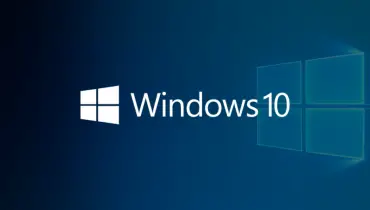How to Persuade Talented Employees to Move to Your Company

In today’s hyper-competitive business landscape, it’s critical that you have the best employees and talent for the job. And sometimes the best person to fill a job opening in your company or organization is someone who is already working with another company.
In fact, a large percentage of candidates on social media are currently employed. Often, they only use these websites to expand their network or keep themselves updated on the latest industry news, job openings, and career development opportunities.
Since open roles call for certain knowledge, skill set and experience, a person who already works in your industry most likely has the attributes you're looking for. How then can you convince the most talented people to jump ship and join your company instead?
Here are some simple yet effective tips that help:
1. Be Consistent
If there’s one word to describe passive candidates, it’s “busy.” They have jobs, which means their days are as jam-packed as yours. This means that it’s highly likely that they will miss your initial attempt at getting in touch with them about your offer for a job, whether that’s through email or other means.
It’s also possible that they saw your message but forgot to respond. If you sent an email, there’s also a chance that it went to the spam folder instead of the recipient’s inbox. No matter the reason for the non-response, you need to be consistent with your follow up.
The best interval for follow ups is around 5 days after sending the first communique. Software solutions like Getbrokerkit recruiting CRM allow for a hassle-free way to manage your contacts and send automated follow-up and drip campaigns to your targets. The software solutions come with other important features that can help with talent recruitment, such as schedulers, templates, and more.
2. Don’t Overwhelm Them
While you want to be consistent in your follow-ups with top talent, there’s also such a thing as too much pursuit. Don’t overwhelm passive candidates with a high frequency of follow-up messages.
No one likes to have their inboxes inundated with a barrage of messages, especially messages out of the blue from someone you barely know. So, keep in mind the ideal time between sending your messages.
If you don’t get a response after two or three follow-ups, stop sending more messages. Instead, rethink your strategy for getting through to them and possible resume or try again after a month or two.
Research suggests that employees are more receptive to recruiters—and therefore more likely to quit—around their work anniversary dates. This is a strategy you can try where applicable.
In addition, it’s best to keep your messages and communication with your target job candidates short and sweet. Again, passive candidates are busy and probably only have a few minutes to spare to read your text or email.
A good length for emails is from 50 to around 120-150 words; anything longer than that and a person’s attention is sure to taper off. And don’t forget to include your call to action towards the end of your messages.
3. Offer Them What They Don’t Have Yet
If you want to entice top talent and passive candidates to join your company, you can’t offer them a job that’s exactly the same as what they’re currently doing. They’re where they are because they’re happy, or at least they haven’t found something else that’s more challenging or interests them more.
As a recruiter or employer, it’s your job to find that “something” else that will set your offer apart. This is where a little bit of research can go a long way.
Check if the candidate has pain points in their current role. Do they want higher commission splits, or perhaps more autonomy? Are they angling for a promotion?
Once you know what they want in their employment role, discuss these things and your proposals and offers (the reason why working with you is better for them). That way you’ll pique their interest and maybe even win them over.
4. Get Them Talking
As a recruiter, it’s expected that you’re going to talk about the role and why it’s a good decision on the part of the candidate to sign on with your company. The problem here is that it makes things all about you, when what you really need is to start a conversation about them.
Remember you’re the one doing the chasing and passive candidates know this. Thus, you have to be strategic about your talking points.
A good technique is to ask questions that make the candidate think. Try something along the lines of “What is your idea of the ‘perfect’ job?” Or, perhaps, “If you would be given the chance to run the company you’re working for right now, what would you change?”
Create a competitive compensation package that reflects your culture, then put the dollars in front of candidates from the start. Stoke their imagination and really make them think.
Finally, frame your questions the right way. Use the term “You” and “Your” as often as is appropriate to make it clear that they’re supposed to be talking about themselves.
5. Hyper-Personalize
It goes without saying that each candidate, passive or otherwise, is different. Thus, you can’t expect one templated message to go over well with all your contacts.
Today, we want companies to recommend music we should listen to, food that we might like, and even programs we should watch. Thus, you need to go the extra mile and personalize your outreach and recruitment strategy.
Here, again, do your research. Thorough research will help you understand who your target employee is as a person for better personalization, including the candidate’s interests, hobbies, and passions.
Fortunately, thanks to widespread social media use, recruiters today have access to a vast pool of publicly available intel about potential candidates that you can use.
Borrow a page from marketers who have a deep understanding of what it takes to establish and bolster rapport with target audiences through personalized messages. For example, use the candidates’ first and or last name so it sounds more personal.
Also pay attention to the wording and content of your emails. Sending an email that says you have personally reached out to them because of their industry background will encourage more responses than just blasting mass emails to a big list of candidates about a job alert.
You can use a template as a guide but ultimately, you should tailor-fit your recruitment script to the individual. This will increase the possibility of not just a response, but also a complete conversion.
Ultimately, no matter how polished your efforts are, there’s still the possibility of rejection. However, don’t just strike the person’s name off your list just yet.
If they responded to your message and you had a good conversation, put them in your passive talent pool. Get in touch with them later on, perhaps when another role comes up or after enough time has passed.
As a recruiter, adding one more person to your network is always a good thing.



![9 Tips for Managing Your Online Writing Projects Efficiently [node:titile]](/sites/default/files/styles/thumbnail_rectangle/public/open-book-laptop-online-writing-tips.jpeg?itok=iq4PIT7b)










![9 Tips for Managing Your Online Writing Projects Efficiently [node:titile]](/sites/default/files/styles/video_thumbnail_bottom/public/open-book-laptop-online-writing-tips.jpeg?itok=rI4zR3a-)







